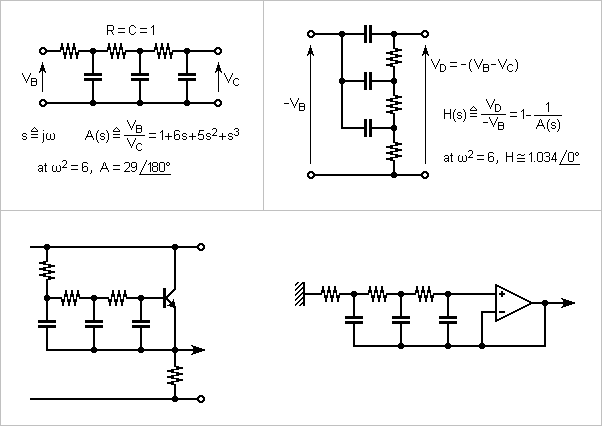Release:
A lecture corridor is not really a place to keep lectures—it is a cornerstone of academic life and a spot where pupils interact, understand, and grow. Whether you are a student attending a big lecture or perhaps a professor giving a lecture, the lecture hall plays a crucial role in the academic experience. In this article, we’ll examine the importance of the lecture corridor, its design things, and how it’s growing to meet the needs of contemporary education. From cutting-edge systems to variable sitting arrangements, lecture halls are no more just about rows of desks experiencing a stage—they are powerful places made for effective understanding and collaboration.
What is a Lecture Hall?
A lecture corridor is just a big, conventional place made to allow for a significant quantity of pupils for lectures and presentations. Unlike smaller classes, lecture halls are normally useful for programs that include big teams, such as university lectures, visitor speakers, and conferences. These places are designed with audio-visual gear, comfortable sitting, and other features that produce understanding participating and efficient.
The Importance of a Lecture Hall in Education
The lecture corridor plays a vital role in surrounding the educational experience. Its size and design permit big sets of pupils to be taught concurrently, and its structure is often improved to enhance awareness and acoustics. In a normal lecture corridor, pupils benefit from a definite see of the lecturer, media presentations, and collaborative places that support conversation and engagement.
Key Elements of a Well-Designed Lecture Hall
In regards to planning a fruitful lecture corridor, there are numerous key elements to consider:
1. Sitting Arrangement
The sitting structure in a lecture corridor considerably affects both the educational and training experience. Conventional lecture halls usually function rows of chairs, but newer styles may incorporate tiered or variable sitting that may be rearranged for party actions or interactive discussions.
2. Audio-Visual Equipment
Modern lecture halls are designed with sophisticated audio-visual engineering, including projectors, noise programs, and interactive whiteboards. These resources help lecturers deliver participating presentations and assure that pupils can see and hear the material clearly.
3. Acoustics
Appropriate acoustics are critical in a lecture corridor.Noise understanding is a must for pupils to know the lecturer and any media presentations. Supreme quality acoustic design guarantees that also the farthest chairs in the space provide a definite oral experience.
4. Illumination
Adequate lighting in a lecture corridor is essential for both the awareness of the lecture material and the comfort of the students. Flexible lighting programs can be used to highlight the lecturer, the monitor, or interactive parts, with respect to the wants of the class.
5. Comfortable Environment Get a handle on
A comfortable atmosphere is required for long lectures. Modern lecture halls are designed with weather get a grip on programs that enable for temperature changes, ensuring pupils can give attention to the material rather than uneasy temperatures.
How Technology is Shaping the Future of Lecture Halls
Engineering has changed the way we train and understand, and lecture halls are no exception. Lately, there is a significant shift toward adding sophisticated systems that enhance both training and learning. Here really are a few technical inventions which can be transforming lecture halls:
1. Smartboards and Fun Features
Fun whiteboards, or smartboards, are increasingly being found in lecture halls to interact pupils with media content. These panels allow lecturers to write records, exhibit films, and also talk with content in real-time.
2. Stay Streaming and Cross Classes
With the increase of on line understanding, several universities are equipping their lecture halls with stay streaming technology. This permits pupils who can not attend personally to however take part in lectures from home.
3. Market Answer Methods
To inspire student involvement, several lecture halls are now designed with audience response programs that enable pupils to solution questions or participate in polls through the lecture.
4. Artificial Intelligence and Understanding Analytics
Some universities are tinkering with AI and understanding analytics in lecture halls to monitor student engagement and provide customized understanding experiences based on the data collected.
The Evolving Role of the Lecture Hall in Education
Lately, the lecture corridor has evolved from a traditional place for inactive understanding how to an even more interactive and powerful environment. Universities and colleges are increasingly improving these places to allow for different training methods, such as made classes and collaborative learning.
1. From Lecture to Collaboration
The traditional style of the lecture corridor has been moving towards more collaborative understanding environments. Several contemporary lecture halls today function portable desks, breakout rooms, and places made for party discussions and teamwork.
2. Sustainability in Design
As sustainability becomes an integral emphasis in structure, lecture halls are increasingly being made with energy effectiveness and environmental responsibility in mind. From energy-efficient lighting to the use of sustainable making components, the eco-friendly design of lecture halls is getting momentum.
3. Flexible Understanding Spaces
Today’s lecture halls are increasingly made with freedom in mind. Lecture halls with movable sitting, adjustable lighting, and modular designs can provide numerous training designs and actions, making places where pupils can collaborate, interact, and participate in effective learning.
Why Lecture Halls Matter: The Impact on Students and Teachers
For pupils, a well-designed lecture corridor is a must for an optimistic understanding experience. The physical atmosphere make a difference how pupils absorb information, collaborate with associates, and interact with the material. For educators, an operating lecture corridor gives the required resources to produce a fruitful understanding atmosphere that encourages involvement and interaction.
1. Student Diamond
The look and engineering of a lecture corridor can considerably influence how engaged pupils are within a lecture. Fun systems and comfortable, variable sitting help develop an atmosphere where pupils are more prone to participate and keep information.
2. Professor’s Training Experience
Professors also benefit from a well-designed lecture corridor.A clear see of the pupils, sophisticated engineering, and an improved audio system all donate to a far better training experience.
Frequently Asked Questions (FAQ) About Lecture Halls
1. What is the typical size of a lecture corridor?
Lecture halls can range in size with respect to the institution and the kind of course being taught. They could provide anywhere from 50 to 500 students.
2. May lecture halls be useful for other functions?
Sure, several lecture halls are flexible places that can be used for conferences, workshops, and also shows or big meetings.
3. What’re the very best sitting arrangements for a lecture corridor?
The perfect sitting layout depends on the kind of lecture or event. For traditional lectures, tiered sitting gives greater visibility. However, for collaborative understanding, movable sitting is often preferred.
4. How has engineering transformed lecture halls?
Engineering has created lecture halls more interactive and accessible. Characteristics like smartboards, stay streaming, and audience response programs are transforming the educational environment.
5. Are contemporary lecture halls made with sustainability in mind?
Sure, several contemporary lecture halls were created with sustainability in mind, adding energy-efficient programs and eco-friendly materials.
Conclusion:
The lecture corridor has come a considerable ways from its traditional design. Nowadays, it’s a vibrant place that fosters understanding, engagement, and collaboration. Whether you are planning a new lecture corridor or establishing a preexisting one, understanding its significance and adding contemporary systems and variable features can considerably boost the academic experience. As knowledge remains to evolve, so also may the lecture corridor, ensuring it remains an integral the main understanding trip for years to come.











Leave a Reply